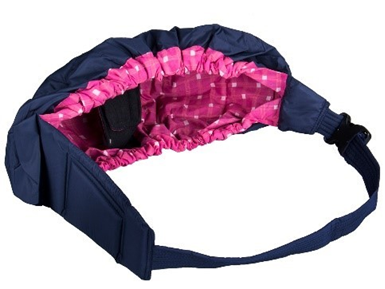- Pediatric Answers
- Posts
- Tips For Choosing A Good Preschool
Tips For Choosing A Good Preschool
How to find a good preschool. Back-to-school anxiety. Car seat savings ($169). Recalled Baby Slings. Three Ears?

What's Inside

Choosing A Good Preschool
School is already starting this week for my kids. This time of year, I get LOTS of questions about preschool, what to look for, is it a good idea? And it always reminds me of this social event I attended in New York City back when I was in med school—before I had kids.
I overheard some moms talking about preschools. Some of these elite preschools had waiting lists that were years long.
I recall thinking how crazy it sounded that I needed to put my unborn child’s name on a list to get into a certain school.
Were those schools really all that?
I have since moved and recognized that there are many other high quality preschools out there—if you have the funds and forethought to put your kid in one of those elite preschools, more power to you. For the rest of us, read on:
Generally speaking, preschool is tuition-based (although there are some free programs, like the state funded Head Start programs in some areas). Preschool is not required, but I highly recommend a good quality preschool program.
Did you know that studies suggest that where most kids start academically in kindergarten, tends to be where the stay their entire academic career? (If they’re advanced, they stay advanced. If they’re behind, they stay behind.) Now, there are exceptions to the rule, but generally, if your child is already reading and counting, he will be put in the better reading and math groups. Once you are in those better groups, you tend to just progress at that elevated level. So as if there wasn’t enough pressure already to provide every opportunity or advantage to our children, add preschool to the never-ending list.
What to look for in a good preschool?
Good preschools have many of these features:
There is a program or schedule for teaching core principles (e.g., letters, letter sounds, maybe reading, numbers, colors, shapes, days of the week, seasons, writing)
The teacher-to-student ratio isn’t too high. In the preschool years, 8-12 students per teacher is ideal.
There are opportunities for children to learn to interact with the other children and learn social skills (determine how the preschool handles conflict when it arises between the children).
There are set expectations and ground rules. Learning to follow rules and directions and listening to the teacher are important skills for a preschooler to learn.
The classroom should have a welcoming and orderly environment (steer clear of a chaotic classroom).
Qualified, caring staff. Many schools require teachers to have specialized education. Determine what specific training teachers have.
The school should have a current state license indicating that it has met minimum state requirements for health and safety.
Registration for most preschools was ages ago—you have to apply months in advance in many cases. But, it’s always worth checking to see if a spot has opened up. Get on a waiting list. We always see lots of changes that first week of school, so you may get in.
If you’re looking at those elite, $$$ preschools in NYC, you’re already out of luck. Should of thought of that five years ago. 🙂

Fact Or Fiction: No Preschool = Dumb Kid
If I don’t send my child to preschool, she’ll never amount to anything and end up living in a van down by the river.

FALSE
Look, all the studies laud the benefits of a child attending preschool. It’s important for learning and social development. Studies show that kids who are advanced in kindergarten tend to stay advanced throughout their education.
I’m a firm believer in preschool. I almost always recommend it.
But, will skipping preschool be the end of the world?
No, of course not. You and your child will survive. You’ll be fine.
If you have the option and can make it work, though, I highly recommend your child attends preschool.

What I’m Seeing at Work: Back-to-School Anxiety

I’ve seen so many kids in the last few weeks getting ready to start school. While a few are excited, it seems most are experiencing worry and trepidation. This is especially true for those kids who are making big transitions (e.g., starting kindergarten, first grade, Jr. High, High School). Worry over new classes, new teachers, not knowing where to go, who to eat lunch with, the list of worries goes on and on.
Here are a few tips to make the transition easier for your child.
Make a few practice runs. Before school starts, go to the new school. Walk the route to the various classes, lunchroom, bathroom, etc. with your child. Make sure he/she knows where he/she is going.
Review how the child is going to get to and from the school. Talk about contingency plans (wait in the office if mom is late picking you up, call mom before going home with anyone else, what to do if you miss the bus, etc.)
Get school supplies and back packs ready to go a few days before.
It’s all about marketing. Talk about how great school is going to be. Talk about how great the new class, teachers, and friends are going to be. Tell your child of your confidence in his/her ability to be successful. Kids take their cue from parents. If you’re anxious, worried, or sad, do not let on in front of your child
Make a concerted effort to learn the names of the kids in your child’s class (or at least their friends, if the kid is older). That way, you can ask about their day and know about those involved. We play a game with our youngest children. In the first couple of weeks of school, they have to come home after school and tell us the names of two new kids they met (and two facts about them). This encourages our child to talk to other students, make new friends, and help with the adjustment. The challenge for me is to try and remember the names.
Pro Tip: For New Kindergarten Parents: At drop off on the first day, give a quick hug or fist bump outside of the classroom and go. Don’t go into the classroom. Don’t tarry. Say, “I love you, have the best day!” and walk away. Don’t let the child see you cry (I will admit I cried after I dropped off my oldest to kindergarten). Be all smiles and confidence in front of your kid (even if you’re dying inside).


Money-Saving Tip: Car Seat Savings
Save yourself having to buy an extra car seat. When you buy the convertible car seat (this is the big seat used between the infant seat and the booster), make sure it has these features:
Can go rear and forward facing?
Is rated to support a child up to 60 lbs. (some cap out at 40 lbs., which means you’ll end up having to buy a second, larger car seat down the line if you have a bigger child at 3-5 years)?
COST SAVINGS: $169 (average cost of a car seat)

WWWD: Anal Fissure
I often joke that if it weren’t for my profession, we’d be at the doctor’s office weekly with one of our four kids. I use my skills at home all the time. Here, I’ll share a recent example from home and how I handled it, including the products I used. This isn’t an advertisement—I don’t have any financial interest in these products. I simply have parents ask me all the time about what to do in certain situations and the products I use.

Scenario: There was blood on the toilet paper and in the water after my child went poop. Upon inspection there was a little tear in the skin around the anus.
Little tears in the skin around the anus are called anal fissures. They are really common, esp. after a trying to pass a hard stool. The whole experience is often painful and leads to kids feeling anxious about future stooling. Consequently, the child with holds stool and makes the situation worse. So here’s the steps to treatment:
Clean the area well. In our case, I washed the anus with a some mild soap (we use Dove) and let the child sit in a warm sitz bath (shallow tub with warm water and 2 cups of Epsom salts) for 10 mins. This helped with swelling and gave some pain relief.
I applied some mupirocin ointment (my favorite prescription antibiotic ointment) to the entire anal opening. You could use over the counter antibiotic ointment if that’s all you’ve got.
I instructed the child to put the antibiotic ointment on after stool and 2 other times a day (totaling 3 times a day). I reiterated the importance of good cleaning and ointment use, by using the example of a cut on the arm that you were trying to heal. If you rubbed poop in it 1-2 times a day, it would be hard to heal. This concept, drove home the importance to my child.
Pro Tip: Keep the stools pudding consistency (preferably by diet, but with Miralax if necessary) to prevent the anal fissure from opening back up as it’s healing. Even one hard stool can tear new healing skin right open again. This can take weeks-to-months.

Recalls & Alerts: Baby Sling Carriers

Funny Things: Three Ears?

Had a cute little in the office the other day. As I’m examining the child I ask:
Me: How many ears do you have?
Patient: (Excitedly) Three!
Mom: (Laughing) Why don’t you listen then with all those ears?
This is why I love peds. 🤣

Legal Disclaimer: The information provided in this article is for educational and informational purposes only. It is not intended as a substitute for professional advice or medical treatment. Always seek the advice of your physician or qualified healthcare provider with any questions you may have regarding a medical condition or the health and welfare of your child. We do not endorse any specific products or brands mentioned in this article. Readers are encouraged to perform their own research and consult with appropriate professionals before making any decisions based on the information provided herein.
